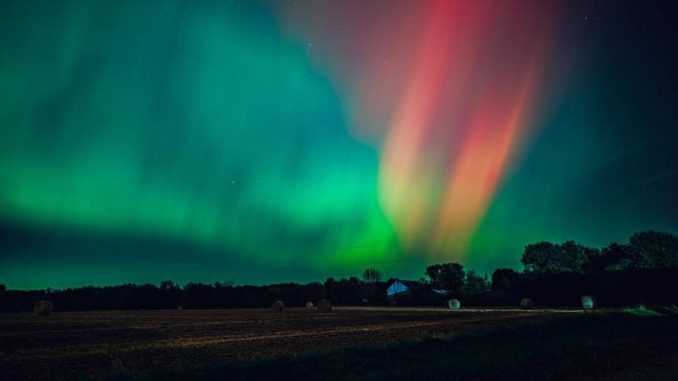
Aurora Alert: Northern Lights to dazzle us again tonight, Incoming solar storm to unleash auroras; Here’s Where Aurora Borealis Would Be Seen Tonight
A portion of the northern U.S. may be able to see the northern lights Tuesday night, and there may be another opportunity to see the phenomenon on Wednesday, according to a National Oceanic and Atmospheric Administration forecast.
Key Facts
NOAA forecast a Kp index of 4 for Tuesday night, meaning aurora borealis will move farther south, become brighter and be “quite pleasing to look at” for viewers in the right area.
A minor geomagnetic storm—caused by a burst of energy and particles released by the sun—is expected Wednesday and will likely push the northern lights farther south within a few days, according to NOAA.
Stronger geomagnetic storms have the potential to impact critical infrastructure, including possible widespread voltage control issues causing power grids to fail, according to NOAA, which warned of a “severe” storm last week that pushed the aurora borealis as far south as Texas.
Where Will The Northern Lights Be Visible?
An area of the northern U.S. is expected to have a chance of viewing the aurora, with a higher likelihood of seeing the phenomenon in Alaska and Canada. States with a lower chance of seeing the northern lights include Washington, Idaho, Montana, North Dakota, Wisconsin and Michigan, while sections of northern New York and Maine have a lesser chance.

What’s The Best Way To See The Northern Lights?
The best time to see the aurora is between 10 p.m. and 2 a.m. while at a higher elevation or vantage point, like a hill, that’s away from light pollution, according to NOAA.
What’s The Best Way To Photograph The Northern Lights?
Visit Iceland, Iceland’s tourism website, advises using smartphones with night mode turned on while using lower shutter speeds to take photos of the aurora.
Key Background
An increase in sunspots and geomagnetic storms during the sun’s latest 11-year cycle—Solar Cycle 25—has contributed to stronger aurora forecasts in recent weeks. NASA expects the cycle to peak between late 2024 and early 2026, meaning there will continue to be northern lights sightings throughout next year. It’s likely there will be more geomagnetic storms leading up to 2026, according to NASA, as the sun’s activity has been busier than projected. Last week, NOAA warned of a strong geomagnetic storm that pushed the northern lights as far south as Texas.
Leave a Reply